
The Channel Island Leprosarium was a quarantine station that operated as a colony for people suffering from leprosy in the Northern Territory of Australia from 1931 to 1955. Channel Island forms part of Middle Arm, located just south of Darwin.

The Channel Island Leprosarium was a quarantine station that operated as a colony for people suffering from leprosy in the Northern Territory of Australia from 1931 to 1955. Channel Island forms part of Middle Arm, located just south of Darwin.
The Channel Island Leprosarium was opened in 1931 replacing the Mud Island Lazaret. Sisters from the Daughters of Our Lady of the Sacred Heart took over the health service in 1947. An increase in leprosy cases in the 1950s led to overcrowding and the facility was closed in 1955. It was replaced by The East Arm Leprosarium on the mainland. [1]
Patients were compulsorily isolated, were often treated poorly and were cut off from their families. [2] [3]
The site was heritage listed in February 1997. [4] Many buildings have fallen into disrepair, and there are some foundations, collapsed huts and wall structures that remain. The bodies of at least 60 patients are buried on site. [5]

Darwin is the capital city of the Northern Territory, Australia. With a population of 139,902 at the 2021 census, the city contains most of the sparsely populated Northern Territory's residents. It is the smallest, wettest, and most northerly of the Australian capital cities and serves as the Top End's regional centre.

A leper colony, also known by many other names, is an isolated community for the quarantining and treatment of lepers, people suffering from leprosy. M. leprae, the bacterium responsible for leprosy, is believed to have spread from East Africa through the Middle East, Europe, and Asia by the 5th century before reaching the rest of the world more recently. Historically, leprosy was believed to be extremely contagious and divinely ordained, leading to enormous stigma against its sufferers. Other severe skin diseases were frequently conflated with leprosy and all such sufferers were kept away from the general public, although some religious orders provided medical care and treatment. Recent research has shown M. leprae has maintained a similarly virulent genome over at least the last thousand years, leaving it unclear which precise factors led to leprosy's near elimination in Europe by 1700. A growing number of cases following the first wave of European colonization, however, led to increased attention towards leprosy during the New Imperialism of the late 19th century. Following G.A. Hansen's discovery of the role of M. leprae in the disease, the First International Leprosy Conference held in Berlin in 1897 renewed interest and investment in the isolation of lepers throughout the European colonial empires. Although Western countries now generally treat cases of leprosy individually on an outpatient basis, traditional isolated colonies continue to exist in India, China, and some other countries.

Carville is a neighborhood of St. Gabriel, located in Iberville Parish in southern Louisiana, sixteen miles south of Baton Rouge, on the Mississippi River. Best known as the childhood hometown of famed political consultant James Carville, it is also known for its sixty-five-year history as the only place in America to treat leprosy until outpatient treatment became viable in 1981. Nowadays, that legacy is celebrated at the National Hansen’s Disease Museum, which educates visitors about the condition.
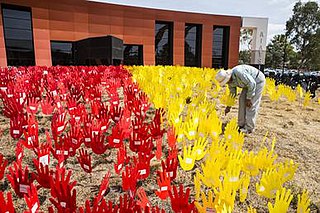
The Australian Institute of Aboriginal and Torres Strait Islander Studies (AIATSIS), established as the Australian Institute of Aboriginal Studies (AIAS) in 1964, is an independent Australian Government statutory authority. It is a collecting, publishing, and research institute and is considered to be Australia's premier resource for information about the cultures and societies of Aboriginal and Torres Strait Islander peoples.

Peel Island is a small heritage-listed island located in Moreton Bay, east of Brisbane, in South East Queensland, Australia. The island is a locality within the local government area of Redland City and a national park named Teerk Roo Ra National Park and Conservation Park.
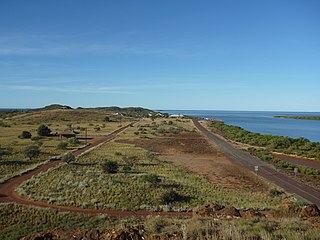
Cossack, known as Bajinhurrba in Ngarluma language, and formerly known as Tien Tsin, is an historic ghost town located 1,480 km (920 mi) north of Perth and 15 km (9.3 mi) from Roebourne in the Pilbara region of Western Australia. The nearest town to Cossack, which is located on Butcher Inlet at the mouth of the Harding River, is Wickham. The former Tien Tsin Harbour is now known as Port Walcott. Since 2021, the townsite is managed and operated by the Ngarluma and Yindjibarndi Foundation Ltd (NYFL).

Fantome Island is one of the islands in the Palm Island group. It is neighboured by Great Palm Island and is 65 km (40 mi) north-east of Townsville, Queensland on the east coast of Australia. The island is small with an area of 7.8 km2 (3.01 sq mi) and is surrounded by a fringing reef. The Djabugay (Aboriginal) name for this island is Eumilli Island.
Leprosy stigma is a type of social stigma, a strong negative feeling towards a person with leprosy relating to their moral status in society. It is also referred to as leprosy-related stigma, leprostigma, and stigma of leprosy. Since ancient times, leprosy instilled the practice of fear and avoidance in many societies because of the associated physical disfigurement and lack of understanding behind its cause. Because of the historical trauma the word "leprosy" invokes, the disease is now referred to as Hansen's disease, named after Gerhard Armauer Hansen who discovered Mycobacterium leprae, the bacterial agent that causes Hansen's disease. Those who have suffered from Hansen's disease describe the impact of social stigma as far worse than the physical manifestations despite it being only mildly contagious and pharmacologically curable. This sentiment is echoed by Weis and Ramakrishna, who noted that "the impact of the meaning of the disease may be a greater source of suffering than symptoms of the disease".
As of 2009, 2,600 former leprosy patients were living in 13 national sanatoriums and 2 private hospitals in Japan. Their mean age is 80. There were no newly diagnosed Japanese leprosy patients in 2005, but one in 2006, and one in 2007.
The Nagashima Aiseien Sanatorium (国立療養所長島愛生園), or the National Sanatorium Nagashima Aiseien, is a sanatorium on the island of Nagashima in Setouchi, Okayama, Japan founded in 1930 for the treatment of leprosy. Currently, only former leprosy patients reside there.

Ooshima Seishōen Sanatorium, or National Sanatorium Ooshima Seishōen is a sanatorium for leprosy or ex-leprosy patients, situated in a small island called Ooshima, Takamatsu-shi, Kagawa-ken, Japan which was established in 1909.

Channel Island is a suburb in the Middle Arm region of Darwin in the Northern Territory of Australia. It is located in the local government area of Litchfield. Channel Island Power Station and the Darwin Aquaculture Centre are located on the island.
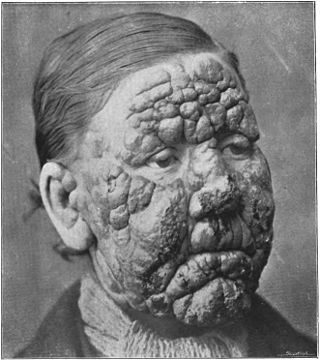
Although leprosy, or Hansen's Disease, was never an epidemic in The United States, cases of leprosy have been reported in Louisiana as early as the 18th century. The first leprosarium in the continental United States existed in Carville, Louisiana from 1894-1999 and Baton Rouge, Louisiana is the home of the only institution in the United States that is exclusively devoted to leprosy consulting, research, and training.
The Culion leper colony is a former leprosarium located on Culion, an island in the Palawan province of the Philippines. It was established by the U.S. government in order to rid leprosy from the Philippine Islands through the only method known at the time: isolating all existing cases and gradually phasing out the disease from the population. In addition to segregating the disease from the rest of the population, the island was later established in order to offer a better opportunity for people afflicted with leprosy to receive adequate care and modern treatments.
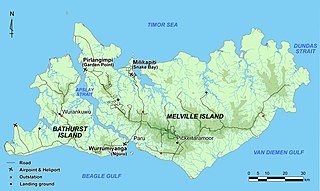
Pirlangimpi, formerly Garden Point, is a populated place on Melville Island in the Northern Territory, Australia.
East Arm is a suburb in the Northern Territory of Australia located in Darwin about 8 kilometres (5.0 mi) east of Darwin City overlooking a part of Darwin Harbour known as the East Arm. It is the traditional land and waterways of the Larrakia people.
Wickham is a locality in the Northern Territory of Australia located about 13 kilometres (8.1 mi) south-east of the territory capital of Darwin City and which overlooks Darwin Harbour.
Middle Arm is a coastal peninsula of Darwin Harbour in the Northern Territory of Australia located about 13 kilometres south of Darwin City. It is the traditional land and waterways of the Larrakia people. Middle Arm includes Wickham Point, Bladin Point, Channel Island and the nearby locality of Wickham.
Steven McGregor is an Australian filmmaker, known for his work on Redfern Now, Black Comedy, Sweet Country, and numerous documentaries, including My Brother Vinnie.
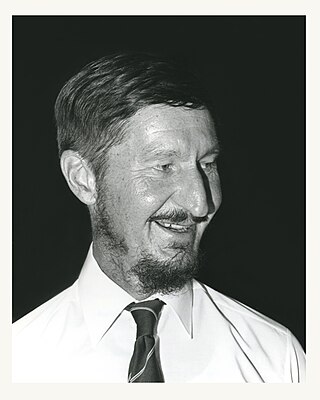
John Hargrave was a renowned Australian surgeon whose work resulted in the near elimination of leprosy in the Northern Territory. In 1959, Hargrave was appointed medical superintendent of the East Arm Leprosarium, which replaced the leper colony known as Channel Island in Darwin Harbour.